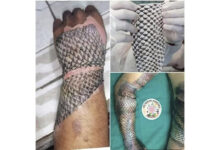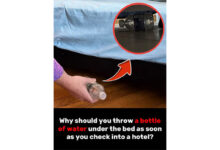Shingles: These are the main symptoms you should never ignore
Shingles, also known as herpes zoster, is a viral infection caused by the reactivation of the varicella-zoster virus (VZV), the same virus that causes chickenpox. After a person recovers from chickenpox, the virus can remain dormant in the body and reactivate later, often due to factors like stress, aging, or a weakened immune system. Shingles typically presents with a painful rash, but it can also cause other symptoms that should not be ignored.
Here are the main symptoms of shingles that you should never ignore:

1. Painful Rash or Blisters
- Where It Occurs : The rash usually appears on one side of the body or face, often in a single stripe following the path of a nerve. This is one of the hallmark signs of shingles.
- What It Looks Like : The rash starts as red patches and progresses to fluid-filled blisters that may burst and crust over.
- Why It’s Important : If left untreated, the rash can lead to complications like scarring or secondary infections.
2. Severe Pain or Burning Sensation
- Description : Many people experience sharp, burning, or stabbing pain in the area where the rash develops, even before the rash appears. This pain can range from mild to excruciating.
- Why It’s Important : The pain is caused by inflammation of the nerves and can persist even after the rash heals, leading to a condition called postherpetic neuralgia (PHN) .
3. Tingling, Numbness, or Itching
- Early Warning Signs : Before the rash appears, some people feel tingling, numbness, or itching in the affected area. These sensations often occur along a specific dermatome (the area of skin supplied by a single spinal nerve).
- Why It’s Important : Recognizing these early symptoms can help you seek treatment sooner, which can reduce the severity of the outbreak and lower the risk of complications.
4. Fever and Chills
- Systemic Symptoms : Shingles can cause flu-like symptoms, including fever, chills, and fatigue. These symptoms are your body’s response to the viral infection.
- Why It’s Important : A fever may indicate that the virus is spreading or that your immune system is struggling to fight it. Seek medical attention if the fever is high or persistent.
5. Headache or Fatigue
- General Malaise : Some people with shingles experience headaches, fatigue, or a general feeling of being unwell.
- Why It’s Important : These symptoms could signal that the virus is affecting more than just the skin, potentially impacting the nervous system.
6. Eye Involvement (Ophthalmic Shingles)
- Symptoms : If the shingles rash occurs near or around the eye (on the forehead or nose), it can affect vision and lead to serious complications like corneal damage, glaucoma, or even blindness.
- Signs to Watch For : Redness, swelling, pain, or sensitivity to light in the eye.
- Why It’s Important : Ophthalmic shingles require immediate medical attention to prevent permanent eye damage.
7. Ear Pain or Hearing Problems (Ramsay Hunt Syndrome)
- Symptoms : If the shingles rash appears near the ear, it can cause ear pain, hearing loss, dizziness, or facial paralysis (a condition known as Ramsay Hunt Syndrome).
- Why It’s Important : This complication requires prompt treatment to prevent long-term damage to hearing or facial nerves.
8. Postherpetic Neuralgia (PHN)
- Symptoms : Persistent pain that lingers for weeks, months, or even years after the rash has healed. PHN occurs when damaged nerve fibers send exaggerated pain signals to the brain.
- Why It’s Important : Early treatment of shingles can reduce the risk of developing PHN, which can significantly impact quality of life.
9. Swelling or Redness Around the Rash
- Signs of Infection : If the blisters become increasingly red, swollen, warm to the touch, or ooze pus, it may indicate a secondary bacterial infection.
- Why It’s Important : Infected blisters may require antibiotics and should be treated promptly to avoid further complications.
10. Weakness or Neurological Symptoms
- Rare but Serious : In some cases, shingles can affect the central nervous system, leading to symptoms like confusion, weakness, difficulty walking, or severe headaches.
- Possible Complications : Conditions like encephalitis (brain inflammation) or meningitis can occur, though they are rare.
- Why It’s Important : These symptoms require emergency medical care to rule out serious complications.
Treatment Options
While there is no cure for shingles, early treatment can help reduce the severity and duration of the outbreak. Common treatments include:
- Antiviral Medications : Drugs like acyclovir, valacyclovir, or famciclovir can help control the virus if started within 72 hours of the rash appearing.
- Pain Management : Over-the-counter pain relievers, topical creams, or prescription medications may be used to manage discomfort.
- Cool Compresses : Applying cool, wet compresses to the rash can help relieve itching and discomfort.
- Vaccination : The shingles vaccine (Shingrix) is highly effective at preventing shingles and is recommended for adults aged 50 and older.
Prevention
- Vaccination : The Shingrix vaccine reduces the risk of developing shingles and PHN by more than 90% in people aged 50 and older.
- Healthy Lifestyle : Maintaining a strong immune system through a balanced diet, regular exercise, and stress management can help prevent shingles outbreaks.
Conclusion
Shingles can cause a range of symptoms, from a painful rash to systemic issues like fever and neurological complications. Early recognition and treatment are crucial to minimizing discomfort and preventing long-term complications like postherpetic neuralgia or vision/hearing problems. If you suspect you or a loved one has shingles, consult a healthcare provider immediately for proper diagnosis and treatment.

